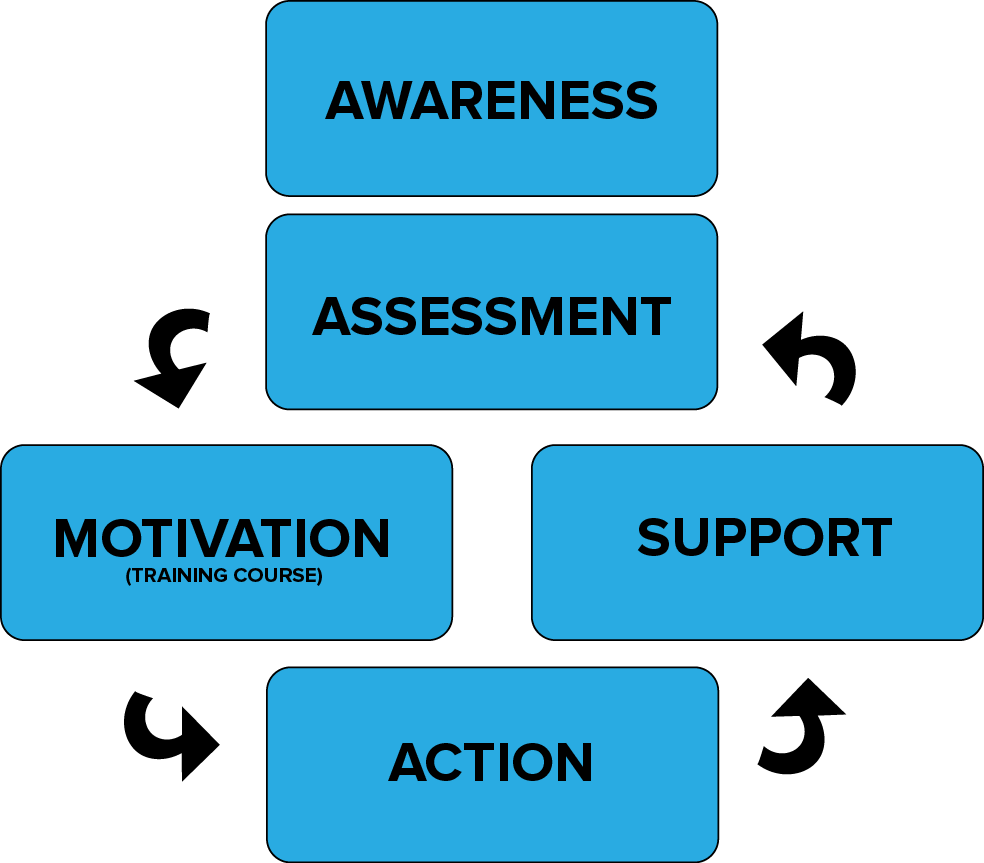Statistics have shown that an organization’s greatest risk is associated with the use of vehicles and equipment, either to and from work or for work, on a daily basis. In order for companies to meet their legal obligations for workplace health and safety regulations, they must be able to show an employee’s ability to safely operate a motor vehicle or other type of equipment. This ability must not only be documented but demonstrated – if not, companies can face significant issues with regards to civil litigation.
Our driver training program will involve five phases of training and uses the Behavioural Based model of instruction. AFSI’s unique training model has proven to be highly effective, particularly as a reoccurring approach over a recommended longer timeframe. This type of reinforcement has been confirmed to positively change a culture within an organization. As a result, organizations committed to this approach can mitigate risks associated to poor driving behaviour and attitude. AFSI’s training is based on a behaviour-change model (originally developed by James Prochaska and Carlo Diclemente, 1982), and is responsive to progressing participants (i.e. employees; drivers), through five phases of change.
The first phase (Awareness) would involve a presentation called Your Greatest Risk (YGR) or Standard of Care(SOC) that would be delivered to all employees who drive or operate vehicles or equipment. These presentations start the process by making the participant aware of the risks associated to driving. Participants will begin the process of self-assessment and take some ownership of the fact that they are part of the solution. AFSI has established that it is very important that all employees participate in the awareness component of this training. Awareness is the foundation for our behavioural-based training program.
The second phase (Assessment) will often begin as the participant is going through the “Awareness” presentation. This self-assessment often equates to the individual recognizing that they take risks when driving and can be part of the solution by making improvements to their personal driving habits.
The organization needs to do its part in the assessment process by monitoring the driving performance of all their employees, which can be done in many different ways. An individual’s driving record (abstracts), incident involvement (past performance), third party assessments, and electronic monitoring (telematics) are some examples that can be used by an organization.
Assessment needs to be done in a positive way and will often determine what specific training the individual requires, rather than simply a generic electronic or hands on course.
The third phase (Motivation) involves the delivery of specific training (see Courses). The training should address high-risk activity and/or situations that have lead to incidents in the past. AFSI does not deliver training for the sake of training, but rather incorporates specific training that is associated to the risks identified.
Phase four (Action) will involve management/supervisors participation in sustaining the program through cultural change that must be driven from the top down. Managers and supervisors must lead by example and take ownership of the program.
The final phase (Support) builds within the organization over time and reinforces the need to be safe when operating vehicles. Everyone has the ability to support the program and reduce incidents involving motor vehicles.
All phases of training will be documented and the client updated on the status of each employee as they progress through the program. Documentation will be provided for the employee’s personnel/driver file.
